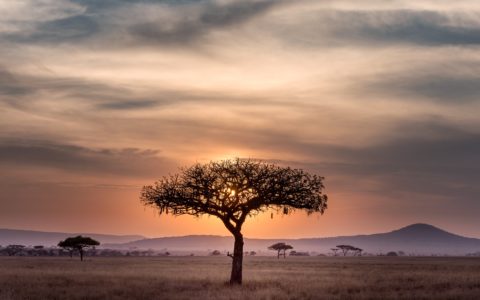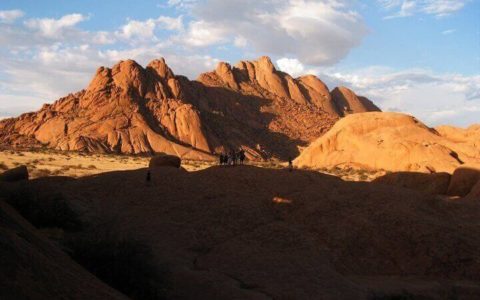Masai Mara Safari
The Masai Mara Park was established in 1961 and is an enormous reserve in Narok County, Kenya. It sits alongside the Serengeti National Park in Tanzania and animals move between the two parks.
In 2005, a visionary conservationist named Jake Grieves-Cook approached the Masai people who owned the land and offered to rent portions of it from them. In exchange, the tribe vacated the land and the area swiftly transformed back into lush grassland, allowing the wildlife to prosper. The reserve was then named in honor of the Masai tribe.
The Masai Mara collect rent for the land and many families benefit from employment at eco-friendly camps in the area. A daily limit applies to tourists and safari vehicles entering the park and as a result visitors enjoy magnificent safari experiences. In addition to game drives through the park you can also partake in walking safaris guided by a knowledgeable Masai tribesman. Cultural tours of traditional Masai villages offer a window into the traditions and lifestyle of this tribe.
The Masai Mara River is home to plenty of hippo and crocodile. In addition the birdlife in the park is spectacular with eagles, ostrich, storks, vultures and over 50 different birds of prey. Other animals in the reserve include hyena, giraffe, impala, topi, baboons, warthogs, buffalo and elephants.
Masai Mara Tours by length
Masai Mara Tours by style
Highlights of Masai Mara Tours
- * Olare Orok Conservancy
- * Adventure tours and safaris
- * Game drives
- * Birding
- * The Mara River
- * Walking safaris
- * The Mara Triangle
- * Horse back safaris
- * Hot-air ballooning and Scenic flights
The various landscapes of the reserve include sandy soil and small shrubbery in the east while the Siria Escarpment forms a remarkable plateau which acts as a border in the west. With dense grass and woodlands around the Mara River along with vast savannahs covering the majority of the park. See the best view of the reserve and it’s wildlife on a luxury hot air balloon at dawn.
Wildlife Highlights
The Masai Mara Ecosystem supports one of the largest lion populations in the world and covers an amazing 1,510 square kilometers. The reserve is home to more than 95 mammal species and approximately 570 documented bird species. Spot leopard, elephant, rhino, buffalo, giraffe, crocodiles, hippopotamus, zebra, cheetah, hyena and gazelles.
Cultural Highlights
The reserve is rich with history on ancient civilizations and discarded arrowheads along pottery of Neolithic man were discovered here. The Masai tribe have also inhabited this region since the 17th century.
The Masai Mara are a semi-nomadic group and one of the most well-known African tribes. Despite the government’s attempt to sway them into abandoning their semi-nomadic traditions, the tribe has kept true to their ancient customs. Instead, the Masai Mara welcome visitors into their homes and give them a taste of their local culture, traditions and lifestyle.
The traditional music of the Masai Mara tribe includes beats of vocal chorus of harmonies, led by a song leader (‘olaranyani’) who sings the main melody. The woman sing lullabies and hum songs, giving praise to their sons. Often they are seen singing and dancing among themselves. A coming of age ceremony for warriors, called Eunoto, includes over ten days of singing, dancing and performance rituals. The warriors are frequently photographed as they partake in competitive jumping. During the ritual, warriors create a circle and perform precise jumps in the middle of the circle.
Another custom of the Masai is piercing and then stretching of their earlobes which are then adorned with a beaded decorations. While it is the women who adorn themselves with earrings, the men often cover their braided hair with thick ochre paste. They also wear fancy head-dresses (usually made of lion mane or eagle/ostrich feathers). The warriors have a distinctive appearance, boasting blood-red cloaks or shukas.
With such a fascinating culture and traditions, visiting the Masai Mara tribes during your trip to Kenya or Tanzania is often a highlight for many travelers.
When is the best time to go on Masai Mara Tours?
In July and August the migration crosses the Mara River after which the animals stay in the Masai Mara Park until November before heading south, back into the Serengeti.
Most people find the hot, dry weather during January and February the most pleasant in comparison to the more rainy periods of the year. This is also the best time for bird watching, as birds in huge numbers flock to the lakes.
East Africa Tours and Budget Safaris















